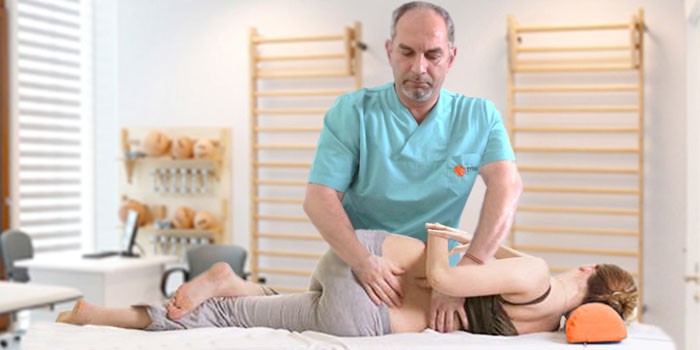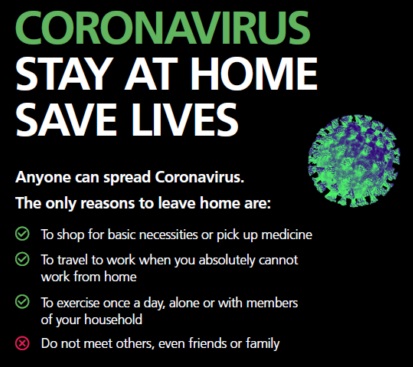Content
- What is manual therapy
- Who is a chiropractor
- Manual Therapy Methods
- Manual therapy techniques
- Indications for manual therapy
- Manual therapy – contraindications
- The price of manual therapy
In ancient times, practicing chiropractic practitioners who could cure a number of diseases of the spine and “lift up” even a disabled person. In modern medicine, this specialty is officially called a massage therapist, and the field of activity is intensive therapy of extensive pathologies of the musculoskeletal system.
What is manual therapy
Alternative methods of treatment in modern society are notably popular, they have found their ardent supporters. Almost every educated person knows what manual therapy is, and how effective such a technique is in practice. Alternative treatment is practiced in all countries, successfully eliminates diseases of the spine of different origin, is an effective prevention of pathologies of the musculoskeletal system.
The essence of the technique is as follows: first, a functional block is removed from the spinal column, then symptomatic treatment with relaxation methods will be applied. Simply put, this is what a chiropractor does: the first thing is to stop an acute pain syndrome, after which he conducts a number of therapeutic measures to prevent a second relapse.
What is the benefit of manual therapy
Currently, several author’s techniques are known that can return to the patient the joy of movement, life without pain. The benefits of manual therapy are obvious, since after the first session the patient experiences long-awaited relief. It is necessary to take a full course to get rid of the disease, and then to maintain their condition with preventive measures. The manual effect obtained from therapy will be delayed for a long time, doctors distinguish three main effects:
- Peripheral. Improving blood circulation, restoring soft tissues, transporting oxygen to cells, updating the characteristics of affected cells, normalizing physiological body fluids.
- Neurophysiological. Restoring the passage of nerve impulses, normalizing the functions of nerve endings.
- Psychophysiological. Systemic action throughout the body, and not just in its individual areas, general strengthening effect.
Who is a chiropractor
A manual therapist is a certified neuropathologist and orthopedist. However, in practice, it works more with hands – it acts directly on the foci of pathology, removes acute pain syndrome. Such a specialist with a wide profile is often consulted by adults, but his specialization extends to the treatment of the younger generation. Manual massage is the basis of intensive care, but one procedure is not enough. It is required to complete the full course, to consolidate the result.
What does a chiropractor treat?
Such a specialist deals with problems of the back and spine, starting from the neck and ending with the lower back, limbs. They turn to him for certified help with acute pain of unknown etiology. A chiropractor treats discomfort, but most importantly, seeks out and productively eliminates the problem of a congenital or acquired character..
Positive dynamics are observed provided that the person adheres to all medical recommendations. The manual worker works with the spine and joints, but this does not prevent him from productively restoring the functions of the digestive tract, endocrine, nervous, and respiratory systems. In addition, it improves the emotional sphere of the patient, the work of internal organs and the brain, strengthens the immune system and stimulates the functions of the circulatory system.
How does a chiropractor treat
Manual therapy successfully combines original techniques with a course of massage, physiotherapy and reflexology. Such an integrated approach to the problem ensures the successful treatment of vegetovascular dystonia, scoliosis, migraines, intervertebral hernia, arthrosis, muscle-tonic syndromes and more. The principle of the manual worker is to determine the cause of the pathology, eliminate it and the symptoms present in the patient’s life. Soft manual therapy is a gentle method that also effectively treats diseases of the musculoskeletal system, acts systemically..

Manual Therapy Methods
The manual worker, depending on the clinical picture, chooses manual methods of exposure directly to the focus of the pathology of the spinal column. What helps with some diseases is ineffective with others. Therefore, authoring techniques are so in demand in practice. The main methods of manual therapy are described in detail below, complement the existing areas of official medicine. It:
- Arthro-vertebral therapy. It treats diseased joints, contributes to their distance from each other. A more intense massage called traction push is used. Manual therapy restores the functions of the spinal disc apparatus, suppresses the pathological process of compression of nerve endings.
- Myofascial therapy. Restores reflexes of muscles and fascia. Such an appointment is appropriate for extensive pathologies of the vascular system, diseases of the joints and connective tissue, neurological pathologies.
- Visceral method. It treats such internal organs as the lungs, intestines, liver, spleen, myocardium, reproductive system, kidneys. In clinical pictures, soft manual techniques are more often involved. Manual therapy may be the main treatment without taking pills..
- The cranial method. It treats diseases related to the brain, affects the joints of the skull, neck muscles. It is also called the cranio-sacral method, and they resort to help with frequent dizziness, decreased concentration of attention and memory, migraine attacks, impaired intracranial pressure.
Manual therapy techniques
Many methods are known aimed at successful treatment of the spine and its departments. The choice is individual, manipulations are carried out precisely with an interval of sessions of 1-3 days. Patient reviews are positive, but in many respects the result depends on the professionalism and experience of the osteopath. The main techniques of manual therapy with a brief description are presented below:
- Push mobilization. Manipulations during manual therapy are carried out directly on the affected joints. In this way, the doctor corrects displaced disks, violates the integrity of exostoses, removes subluxations of articular structures.
- Rhythmic mobilization. Three types of procedure are distinguished with a clear definition of the method of exposure. The stretching technique is suitable for the surfaces of the joints, the rotational one – inserts the connecting structures, the compressive one is used when it is impossible to use the above methods.
- Positional mobilization. Smooth muscle tension in the joints, restoration of the functional reserve, elimination of complications of treatment of the musculoskeletal system.
- Postisometric relaxation. Intense muscle tension is effectively combined with their subsequent smooth stretching. The pain quickly passes in the lumbar, thoracic, cervical and other parts of the spinal column.
Indications for manual therapy
If acute pain syndrome lasts a long period of time, and the effect of pain medication is short-term, it is recommended to urgently visit the manual. However, there are certain indications for manual therapy that make such treatment possible, appropriate. These are the following diseases of the spinal column:
- intervertebral hernia;
- osteochondrosis;
- humeroscapular periarthritis;
- protrusion of the intervertebral discs;
- scoliosis;
- torticollis;
- styloiditis;
- flat feet;
- sciatica;
- pseudostenocardia;
- thoracalgia;
- shoulder epicondylitis;
- cervicalgia.
Manual therapy – contraindications
Reviews about the methodology are positive, but not everyone can put it into practice, use it in the recovery process. There are medical contraindications to manual therapy, which cover the following clinical pictures:
- oncology;
- inflammatory process of joints, spinal cord;
- tendency to bleeding;
- vertebral artery thrombosis;
- previous heart attack or stroke;
- pregnancy;
- open wounds of soft tissues;
- anatomical features of the spine.
The price of manual therapy
Chiropractors are not a free service. Prices depend on the city of specialist reception, his professionalism and reputation in a given direction, the level of a private clinic. You can contact the state polyclinic, where they inexpensively conduct a manual therapy course. In commercial medical centers and institutes, the price is much higher.













